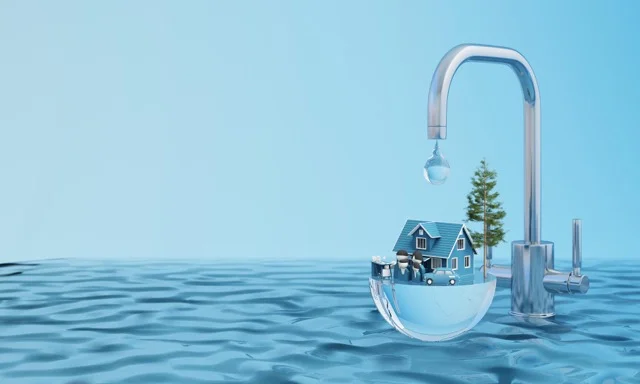The smart Trick of Reclaim Waste That Nobody is Talking About
The smart Trick of Reclaim Waste That Nobody is Talking About
Blog Article
A Biased View of Reclaim Waste
Table of ContentsThings about Reclaim WasteThe Facts About Reclaim Waste UncoveredReclaim Waste for BeginnersNot known Details About Reclaim Waste Some Of Reclaim Waste
Discover the kinds, events, and forms of liquid waste. Domestic sewage waste refers to the waste and products from a domestic sewage-disposal tank. This sort of waste is created by human beings in residences, institutions, and various other structures. This only consists of septic storage tanks that have a drain field. The correct monitoring and disposal of domestic sewage waste call for fluid waste to be transferred to a sewer therapy plant where the correct methods and devices are used to cleanse and throw away waste.
Commercial waste usually consists of potential threats, such as flammable materials or a blend of fluid and solid waste products, and needs an advanced and thorough disposal process. The disposal of commercial waste generally includes the purification of waste before transportation to make certain secure and proper disposal. Hazardous waste is produced from by-products and runoff of industrial processes and manufacturing.
This kind of waste can not use the very same sewage administration transportation or procedures as septic or commercial liquids. The hazardous waste monitoring process needs the assessment and testing of fluid waste before it goes through the disposal procedure (liquid waste disposal). Drainage waste is the liquid waste that comes from drainage and excess stormwater in extremely booming areas or cities
Drainage waste can cause contamination and flooding if not dealt with appropriately. Making certain appropriate waste management can avoid calamities and minimize environmental damage.
The Buzz on Reclaim Waste
Call PROS Solutions today to discover our waste monitoring and disposal services and the correct ways to look after the liquid waste you create.
(http://peterjackson.mee.nu/do_you_ever_have_a_dream#c2256)Do you know what takes place to your water when you disengage, flush the toilet or drain pipes the washing maker? No? Well, it deserves recognizing. This supposed 'wastewater' is not only an important resource yet, after treatment, will certainly be released to our land, waterways or the ocean. Utilized water from toilets, showers, bathrooms, kitchen area sinks, washings and industrial procedures is known as wastewater.

water utilized to cool down equipment or clean plant and tools). Stormwater, a type of wastewater, is runoff that streams from farming and urban areas such as roof coverings, parks, gardens, roadways, courses and gutters right into stormwater drains pipes, after rainfall. Stormwater streams untreated straight to local creeks or rivers, ultimately reaching the ocean.
Reclaim Waste - An Overview
In Queensland, a lot of wastewater is dealt with at sewer therapy plants. Wastewater is delivered from residential or industrial sites via a system of sewage systems and pump terminals, referred to as sewage reticulation, to a sewer therapy plant. Regional federal governments build, maintain and run most sewage therapy plants. Operators are certified under the Environmental Management Act 1994 to release treated wastewater at an appropriate ecological requirement into waterways.
The Department of Natural Resources recommends local governments about handling, operating and preserving sewage systems and treatment plants. In unsewered locations, city governments might call for homeowners to install individual or household sewer therapy systems to deal with residential wastewater from toilets, cooking areas, bathrooms and washings. The Division of Natural Resources authorises the usage of home systems when they are shown to be efficient.
Most stormwater obtains no treatment. In some new subdivisions, therapy of some stormwater to get rid of clutter, sand and gravel has actually started making use of gross contaminant traps. Wastewater treatment takes place in 4 phases: Eliminates strong matter. Bigger solids, such as plastics and other objects mistakenly released to sewers, are gotten rid of when wastewater is travelled through displays.
Wastewater then streams into big tanks where solids resolve and are removed as sludge. visite site Grease and scum are skimmed from the surface. Utilizes tiny living organisms referred to as micro-organisms to damage down and remove continuing to be dissolved wastes and fine fragments. Micro-organisms and wastes are integrated in the sludge. Removes nitrogen and phosphorus nutrients that could trigger algal blossoms in our waterways and endanger aquatic life.
The Basic Principles Of Reclaim Waste
Nutrient removal is not offered whatsoever sewage therapy plants because it calls for expensive specialised equipment. It is becoming much more typical in Queensland. Clear liquid effluent produced after therapy might still have disease-causing micro-organisms. If this effluent is launched right into rivers such as rivers or the sea, the micro-organisms will ultimately pass away out.

Most wastewater moves into the sewage system. Under the Act, neighborhood governments carry out approvals and permits for ecologically appropriate tasks (Periods) involving wastewater launches that may have a local influence.
9 Simple Techniques For Reclaim Waste
Or else, examples are taken for research laboratory evaluation. Usually lots of tests are needed to develop the levels of each of the different toxins such as oils, hefty metals and chemicals in water. Surveillance offers factual information regarding water high quality and can confirm that permit conditions are being satisfied. The info obtained with monitoring gives the basis for making water quality decisions.
Report this page